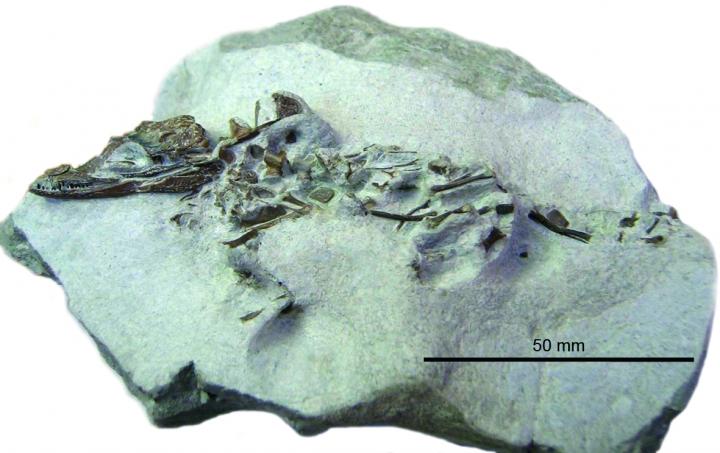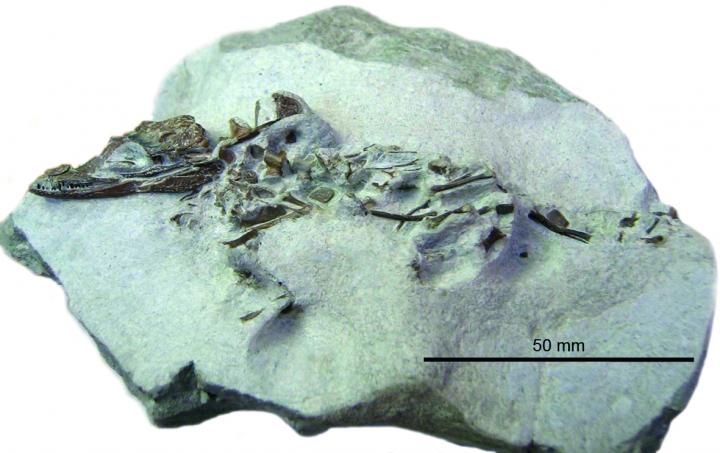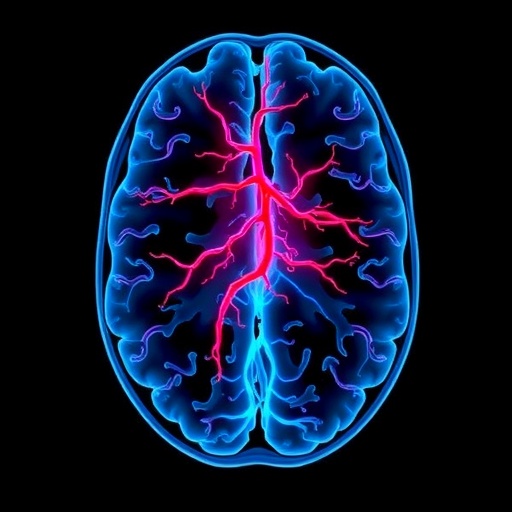
Credit: Schwarz et al (2017)
A small crocodile discovered in Germany's Langenberg Quarry may be a new species, according to a study published February 15, 2017 in the open-access journal PLOS ONE by Daniela Schwarz from Leibniz Institute for Evolutionary and Biodiversity Research, Germany, and colleagues.
The Langenberg Quarry has proven to be a rich source of marine-related fossils, including small crocodile-like atoposaurid species. The fossilized remains of this crocodile were exceptionally well-preserved but were still partly in sediment, making it difficult to examine the fossils fully. After initial analysis, the crocodile was assigned to the Theriosuchus genus. To study this atopasaurid in more detail, Schwarz and colleagues did a 3-D reconstruction of one of the fossil skulls based on micro-computed tomography.
The researchers concluded that the atoposaurid they studied is actually a new species, which they call Knoetschkesuchus. This conclusion is based on unique features of the skull, such as openings in the jaw bone and in front of the eye, as well as of tooth morphology. The latter may have reflected dietary specialization, and diversity of tooth morphology is thought to have been a driver of atoposaurid evolution during the Jurassic.
"The study describes a new diminutive crocodile Knoetschkesuchus langenbergensis that lived around 154 Million years ago in Northwestern Germany," says Schwarz. "Knoetschkesuchus belongs to the evolutionary lineage that leads to modern crocodiles and preserves for the first time in this group two skulls in 3D, allowing us detailed anatomical studies via micro-CT images. Our research is part of the Europasaurus-Project which studies the remains of a unique Jurassic island ecosystem in Northern Germany."
###
In your coverage please use this URL to provide access to the freely available paper: http://dx.plos.org/10.1371/journal.pone.0160617
Citation: Schwarz D, Raddatz M, Wings O (2017) Knoetschkesuchus langenbergensis gen. nov. sp. nov., a new atoposaurid crocodyliform from the Upper Jurassic Langenberg Quarry (Lower Saxony, northwestern Germany), and its relationships to Theriosuchus. PLoS ONE 12(2): e0160617. doi:10.1371/journal.pone.0160617
Funding: The Volkswagen Foundation generously funded the Europasaurus-Project (grant no. 85 882) and OW in the grant initiative "Research in Museums."
Competing Interests: The authors have declared that no competing interests exist.
Media Contact
Beth Jones
[email protected]
############
Story Source: Materials provided by Scienmag





